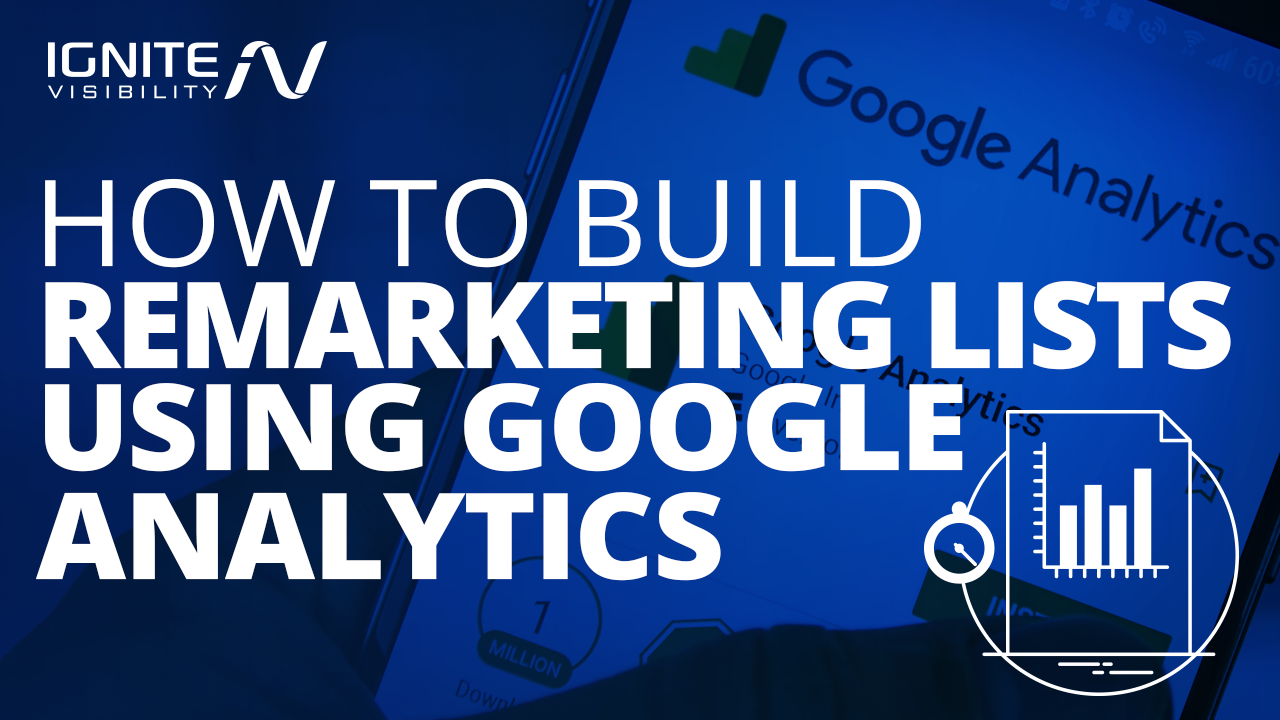How to Leverage Remarketing In Google Analytics for Your Business
How to Leverage Remarketing In Google Analytics for Your Business
Blog Article
Taking Advantage Of Remarketing in Google Analytics: A Comprehensive Overview
Using remarketing in Google Analytics provides businesses a tactical edge in connecting to potential consumers. The capacity to target people who have actually already interacted with your web site presents an unique chance for customized marketing initiatives. By understanding exactly how to craft audience checklists and deploy them effectively, companies can dramatically boost their conversion rates. The intricacies of establishing up and enhancing remarketing campaigns need a thorough understanding of audience division and performance evaluation. This guide will certainly clarify the crucial actions associated with using the complete capacity of remarketing in Google Analytics, leading to enhanced advertising and marketing end results.
Recognizing Remarketing in Google Analytics
Remarketing in Google Analytics permits companies to strategically target individuals who have actually formerly interacted with their website or mobile app. By leveraging data from Google Analytics, companies can create personalized remarketing checklists based upon user habits, such as pages checked out, actions taken, or certain objectives accomplished. This effective tool allows businesses to re-engage with users that have revealed passion in their services or products, inevitably boosting the likelihood of conversion.
Comprehending the various kinds of remarketing strategies is important for an effective campaign - What Is “Remarketing” In Google Analytics?. Google Analytics uses various choices, consisting of typical remarketing, vibrant remarketing, and remarketing checklists for search advertisements (RLSA) Each kind offers a distinct purpose and can be customized to satisfy certain advertising goals
Furthermore, evaluating the performance of remarketing campaigns is essential for maximizing outcomes. Google Analytics gives valuable understandings into the effectiveness of various remarketing approaches, enabling businesses to make data-driven choices and fine-tune their targeting strategy. By continually keeping track of and changing remarketing initiatives based upon analytics data, organizations can optimize ROI and drive success in their marketing campaigns.
Establishing Remarketing Projects

After establishing up target market lists, the following action is to connect Google Analytics with Google Ads. By connecting these two systems, businesses can perfectly transfer target market listings from Google Analytics to Google Ads for remarketing objectives. This combination permits more accurate targeting and better project efficiency.
As soon as the accounts are linked, companies can develop remarketing projects in Google Advertisements utilizing the audience lists formerly defined in Google Analytics. These campaigns can be tailored with certain ad creatives, messaging, and bidding approaches to properly re-engage with previous visitors and drive conversions. By adhering to these actions, companies can take advantage of the power of remarketing to boost their advertising initiatives and increase ROI.
Using Target Market Segmentation Approaches

Predefined segments in Google Analytics allow you to swiftly assess common target market categories like new users, returning individuals, or users who completed a certain objective on your website. Personalized sectors, on the other hand, enable you to develop distinct sectors based on certain criteria that are necessary to your company goals. Dynamic remarketing listings instantly change based upon user behavior, revealing personalized advertisements to customers that have interacted with your site in particular ways.
Analyzing Remarketing Performance Metrics
Upon assessing the performance of remarketing projects in Google Analytics, the evaluation of essential efficiency metrics offers important understandings into target market interaction and conversion prices. By delving right into metrics such as click-through prices (CTR), conversion prices, expense per purchase (CERTIFIED PUBLIC ACCOUNTANT), and return on ad invest (ROAS), online marketers can determine the success of their remarketing initiatives. Evaluating these metrics makes it possible for online marketers to maximize projects, fine-tune audience targeting, and designate budgets successfully to improve total remarketing performance.
Maximizing Remarketing Approaches
When refining remarketing methods in Google Analytics, focusing on audience division is vital for achieving project success. By dividing your audience into particular sectors based on their behavior, demographics, or interests, you can customize your ads much more efficiently per group. This targeted method raises the probability of engaging customers who have actually currently shown interest in your product and services, causing higher conversion prices.
Another vital facet of maximizing remarketing strategies is constantly testing and refining your projects (What Is “Remarketing” In Google Analytics?). A/B screening see this different ad creatives, messaging, or offers can help you recognize what resonates finest with your audience and drives the most conversions. By evaluating the efficiency of these examinations in Google Analytics, you can make data-driven choices to optimize your remarketing efforts even more
Moreover, leveraging vibrant remarketing can considerably improve your campaign results. This feature allows you to show customized advertisements to customers based on their previous communications with your internet site, showcasing services or products they have actually previously viewed. By delivering customized web content to users based upon their passions and habits, vibrant remarketing can aid increase engagement and drive conversions.
Verdict
In final thought, using remarketing in Google Analytics is a critical technique to target individuals who have previously involved with a web site. By producing customized target market listings and using audience division techniques, services can enhance remarketing projects for boosted conversion rates. Examining efficiency metrics and constantly optimizing approaches are vital for optimizing right here the efficiency of remarketing efforts.
Google Analytics supplies various alternatives, including standard remarketing, dynamic remarketing, and remarketing checklists for search advertisements (RLSA)After setting up target market checklists, the next step is to connect Google Analytics with Google Advertisements. By linking these 2 platforms, organizations can perfectly move audience checklists from Google Analytics to Google Ads for remarketing objectives.Once the accounts are connected, businesses can produce remarketing projects in Google Ads making use of the audience provides previously specified in Google Analytics.When refining remarketing strategies in Google Analytics, focusing on audience division is paramount for accomplishing project success.
Report this page